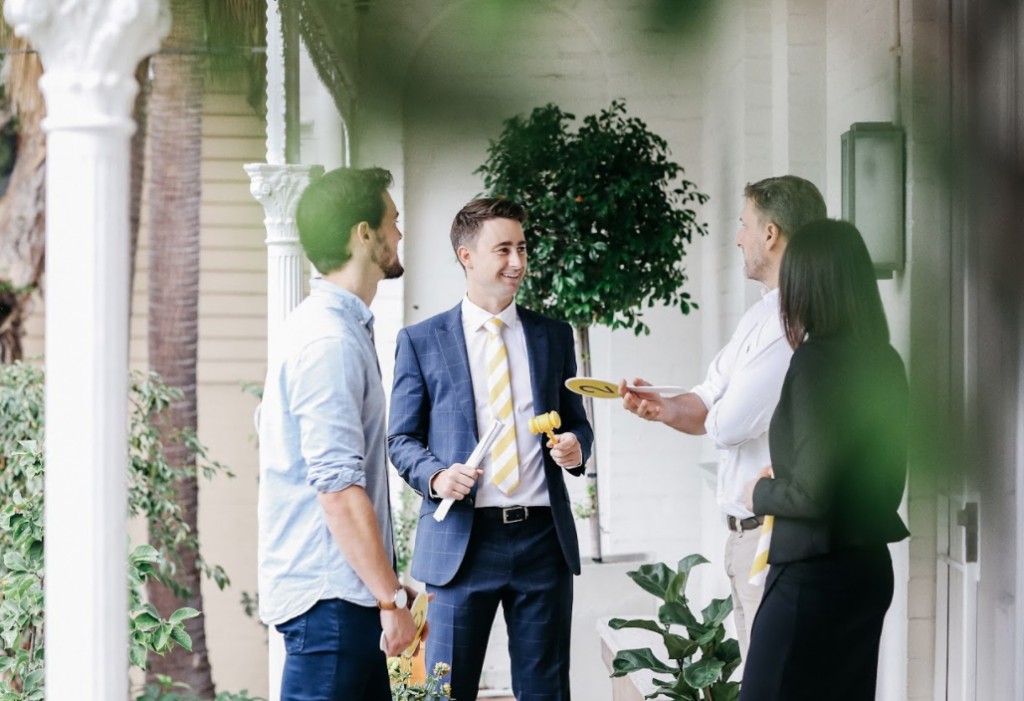By DANIEL BUTKOVICH
In a hot market, many vendors prefer selling at auction as it’s perceived to be the most effective way to get the highest price for a property.
For buyers, auctions can be high-pressure situations where it’s easy to get swept up in the drama – and if you’re not careful – pay more for a property than you had planned.
But luckily there are a handful of strategies buyers can use to help secure the property at the lowest price.
How to take control at an auction
Although local market conditions and the property’s fundamentals have the most significant impact on the price, controlling the bidding can affect the final result, according to Lauren Goudy, buyer’s agent at Rose & Jones.
She suggests buyers arrive at the auction early to choose the best vantage point, and more importantly, determine how many bidders are registered.
“If there are 20 bidders, you might decide to open with a strong bid to knock people out,” she said, explaining that an opening bid above the maximum price of most buyers can immediately shrink the bidding pool.
Bidding increments can set the pace
Data from auction streaming service Gavl has revealed the average increment between bids at auction is $10,418, and the most common knockout bid is $10,000.
But according to auctioneer Damien Cooley, avoiding round numbers is a strategy that can work well for buyers.
“If you are able to change the pace of the auction by bidding in odd increments it keeps your competition guessing, and it makes it more difficult for the auctioneer to add those numbers up,” he said.
Auctions thrive on momentum, and Mr Cooley said controlling the pace of bidding is the key to keeping the price low.
“If you want to control the increments, the first bid you make can be under a round number,” he said. “Don’t start the bidding at $800,000. Start at $795,000,” he added, explaining that bidding will then be more likely to continue in increments of $5000 rather than $10,000.

But he said bidding big is important at the business end of the auction. “Let’s just say your limit is $850,000, and the bid is at $840,000 and they’ve been going up in [increments of] $5000, go straight to $850,000.
“It shows confidence, and at least you get the chance to put the bid in at your maximum amount.”
Similarly, when it comes to setting the budget, Ms Goudy recommends aiming slightly above round numbers. “Most people decide in $50,000 or $5000 increments,” she said. “If you decide that $850,000 is your budget, then you could go to $853,000 or $856,000, but it’s a decision you need to make before you start bidding.”
Pay attention to body language
Understanding how bidders behave at an auction can reveal when a buyer is reaching their limit.
Couples are guilty of some of the biggest tells, which can include having a discussion mid-auction, making a phone call if the other partner isn’t present, or even making eye contact with each other.
According to Ms Goudy, basing your maximum bid on due diligence rather than emotions, having confidence in your decision and being prepared to walk away are the keys to controlling these signs.
“If you go to the auction with conviction, it will show in your body language and your competitors can read it too.”
Mr Cooley said reading the body language of the competition allows buyers to know when to deliver a knockout bid.
“If they look at each other, that’s a sign that they’ve come to the auction with a preconceived number, and they’re either at that number or they’re close to it,” he said. “That’s the point where you as a buyer should increase your increments.
“It might take that buyer 30 seconds or a minute to make the bid, and they’re hoping you won’t bid again. If you’re able to crush their hopes immediately with a counter bid, it sends a message to them that they are not going to buy it.”
Don’t fall into the auctioneer’s traps
Mr Cooley said auctioneers use certain techniques to get buyers to keep pushing the price up.
“Calling the property ‘first, second, third’ is an urgency tool that we use to encourage a bid out of somebody,” he said. “When you’re a registered bidder, you automatically get that fear that you’re going to miss out.”
Mr Cooley said auctioneers use their own body language to encourage another bid by making buyers think the property is about to be sold.
“The grabbing of the gavel makes people think I’ve met the reserve and we’re about to sell,” he said.
Ms Goudy suggested inexperienced buyers may want to avoid bidding altogether to prevent mistakes in the heat of the moment.
“If you are intimidated by the auction process, your best strategy might be to get someone else to bid for you, whether that’s a professional, mum or dad,” she said. “You need to ask someone who is experienced not only in auction bidding, but also in the market.”
Source: Domain.com.au

